Masada, a Fortress and Palace in the Desert
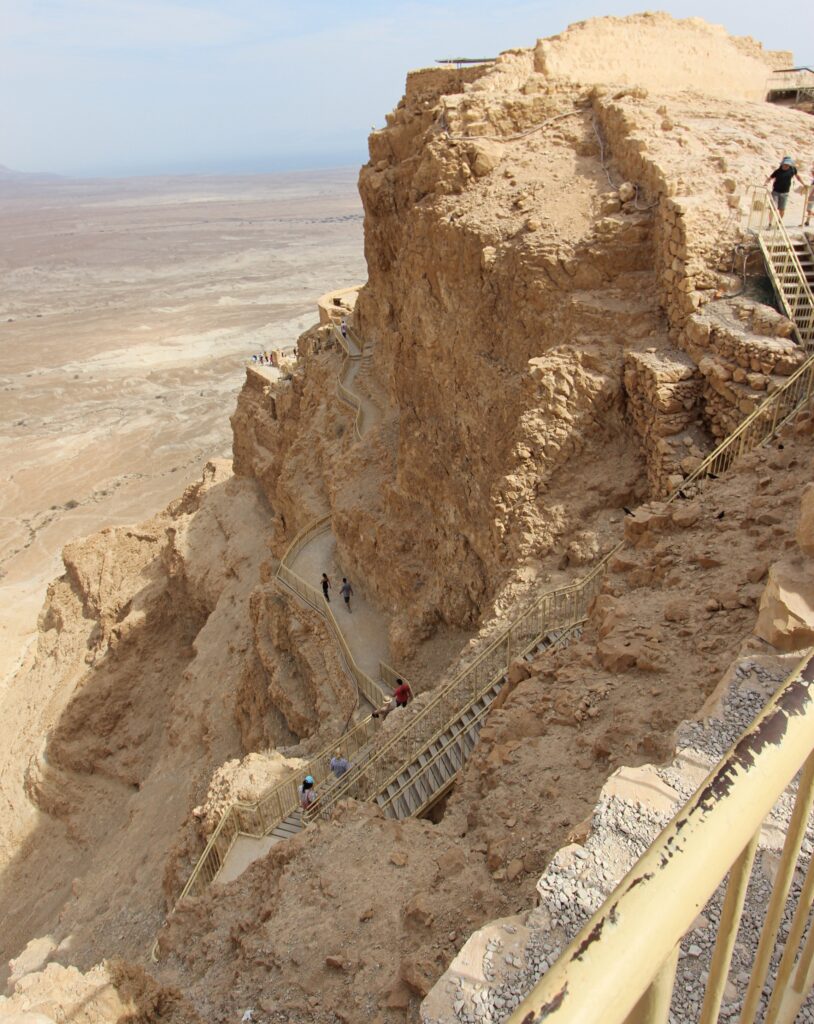
Introduction. Masada is a plateau in the Judean desert near the Dead Sea (seen in upper left corner of photo). The plateau is 1,476 feet (450 meters) above the Dead Sea and is a little over 48 acres in size (2,097,388 square feet or 144,900 square meters). Masada’s remoteness and steep cliff walls made it an ideal fortress during the New Testament period. The name, Masada, means “strong foundation or support.”
Bible reference. The only possible mention of Masada comes from the time of David. Fearing what King Saul might do to David’s family, he took his parents to Moab for safe keeping. He then “left them with the king of Moab, and they stayed with him all the time that David was in the stronghold.” RSV 1 Samuel 22:4. “Then the prophet Gad said to David, Do not remain in the stronghold; depart, and go into the land of Judah.” RSV 1 Samuel 22:5. See also 1 Samuel 24:22, and 1 Chronicles 12:15-16.
Because of Masada’s proximity to Moab, and it being a great place to easily defend, many scholars believe Masada is the place of David’s ‘stronghold.’ Immediately east of Masada is a peninsula that extended most of the way across the Dead Sea leaving a small fordable stretch of water to cross. East of that peninsula was Moab. Geographically it makes sense that the stronghold in the first book of Samuel and Masada are the same. But it is only conjecture and not a proven fact. I personally am of a favorable opinion. See the below photo for a reference to the above paragraph. Note that today, the Dead Sea has receded just as the Great Salt Lake in Utah has. The once peninsula now extends all the way across the Dead Sea with a small man-made canal joining the two bodies of water. Moab appears blurry due to the humidity off of the Dead Sea.
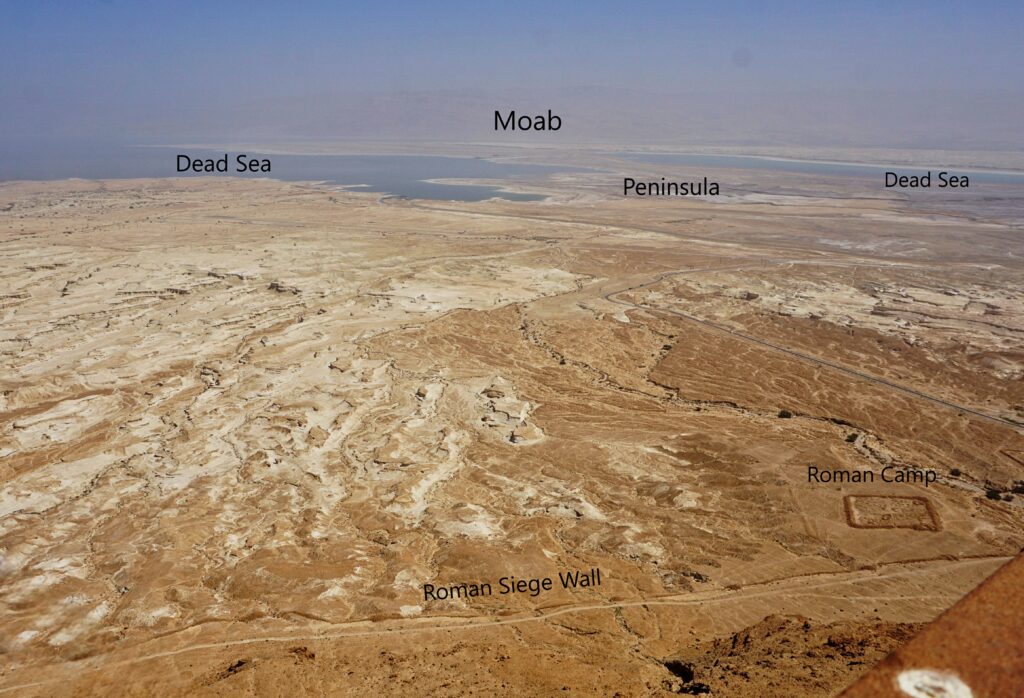
New Testament Period. Josephus Flavius and archaeology are our only sources of information on Masada. Apparently the Macabbeans were the first to build upon the plateau (about 152 to 76 BC). However, King Herod the Great leveled all previous construction to build his own palace fortress (37-4 BC). Herod built all of the palaces, fortress walls, baths, storerooms, cisterns, etc. Herod laid up in store enough food and water to last for years. It became not only a refuge of last resort, but also a winter palace. I will explore many of what Herod built below.
After the fall of Jerusalem to the Romans in 70 AD, the Jewish zealots, called sicarii, fled to Masada. When all of Judea had fallen to the Romans the last holdout was Masada. The Roman army besieged Masada by building a wall around the plateau so nobody could get in or out (73-74 AD). Seeing that the Jews could last a long time against the siege, the Romans began to build a dirt ramp from the nearby western hills to the plateau. The Romans used Jewish slave labor so that if the zealots tried to stop the dirt ramp construction, they would be killing fellow Jews and not Romans. When the ramp was complete, the Romans brought up a siege tower to breach Masada’s defensive walls. Seeing that their defeat was imminent, and not wanting to be slaves, the zealots each killed their own wife and children. They then gathered to drew lots as to who would kill the men. Ten were chosen and then those 10 in turn were killed until the last committed suicide. The next morning when the Romans came over the walls they found nobody but the dead. However, 2 women and 5 children had hid in the cisterns and surrendered to the Romans. It was from them that we learned the fate of the zealots.
Today you can visit Masada by one of three ways. Hike up the snake path from the east, walk the Roman ramp from the west, or take the cable car. I recommend the latter. Some Israeli army units have their recruits hike the snake path to the top where they take their military oath. From this arises the saying in Israel that “Masada will never fall again.” If you visit, and it is worth it, remember that there are only two temperatures “hot” and “really hot.” Bring water and wear a hat.
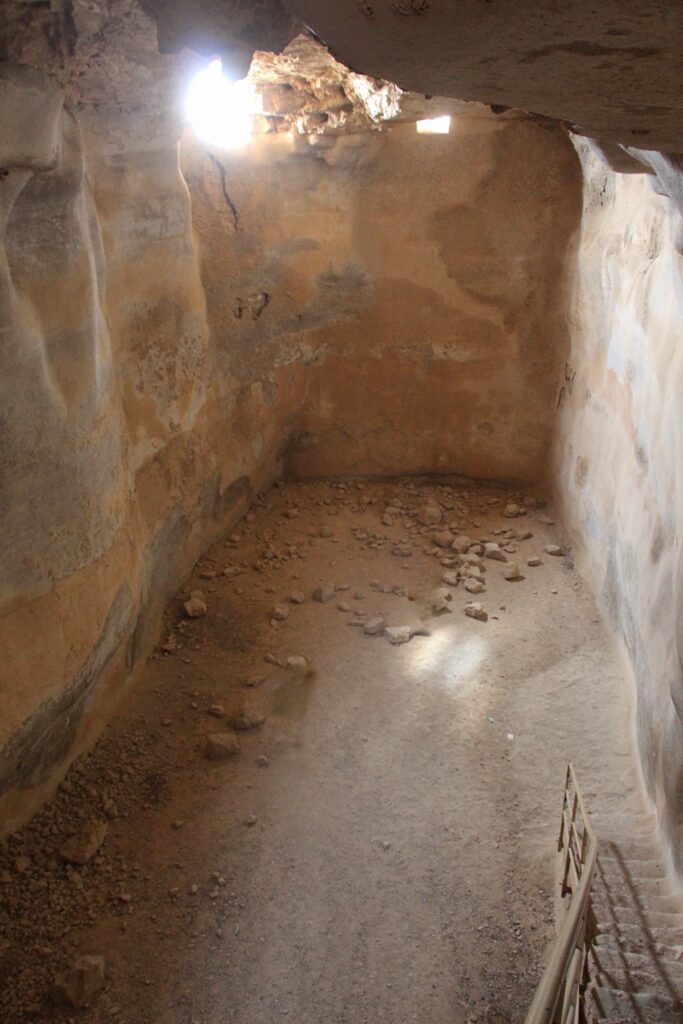
The above is the Southern Cistern. A cistern is an artificial underground reservoir for storing rain water. Masada only gets an average of 0.56 inches of rain per year. However, all the rain was channeled to flow into a cistern on the plateau or on the side of the mount. Pictured is the largest cistern. I estimate that you could fit about 8 dump trucks laid out in 4 and stacked one on top of each other.
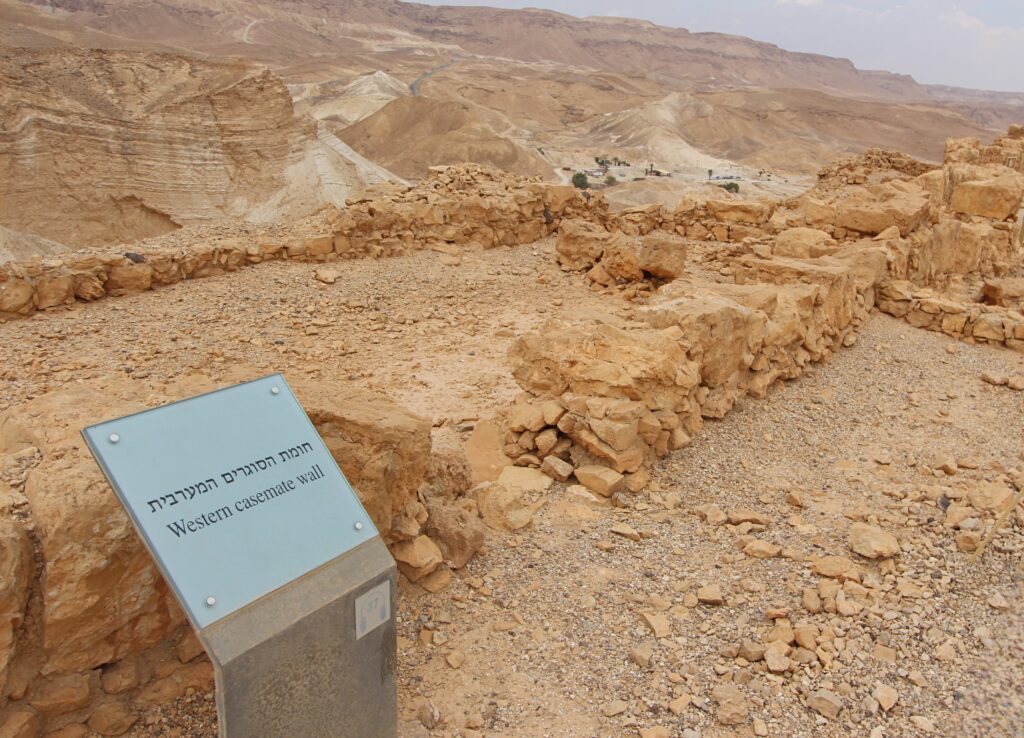
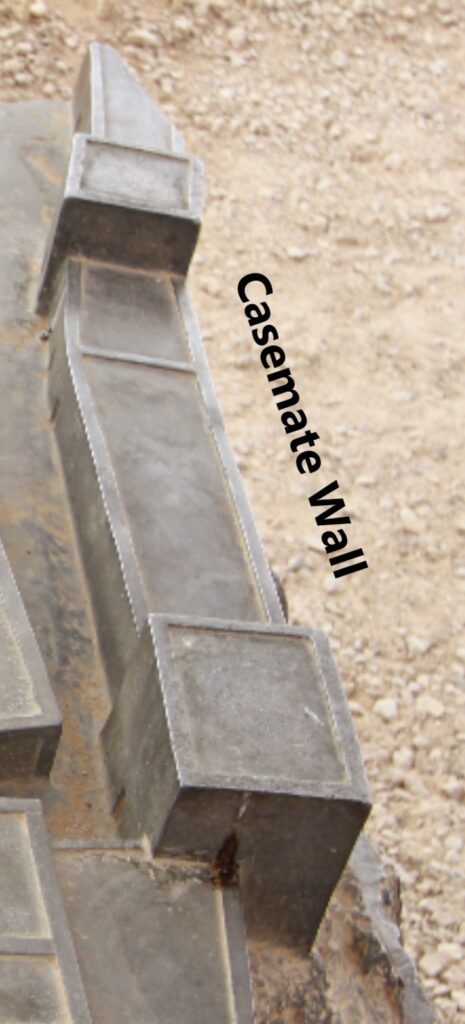
The entire perimeter of the plateau (accept the northern palace complex) was surrounded with a casemate wall. Casemate walls were rectangular rooms set end to end. The rooms could be used for anything in peace time (such as residences, barns or storerooms). But in war time the rooms could be filled with dirt and rubble making a wide and solid defensive wall. They were effective against battering rams which only compacted the dirt inside making the wall stronger.
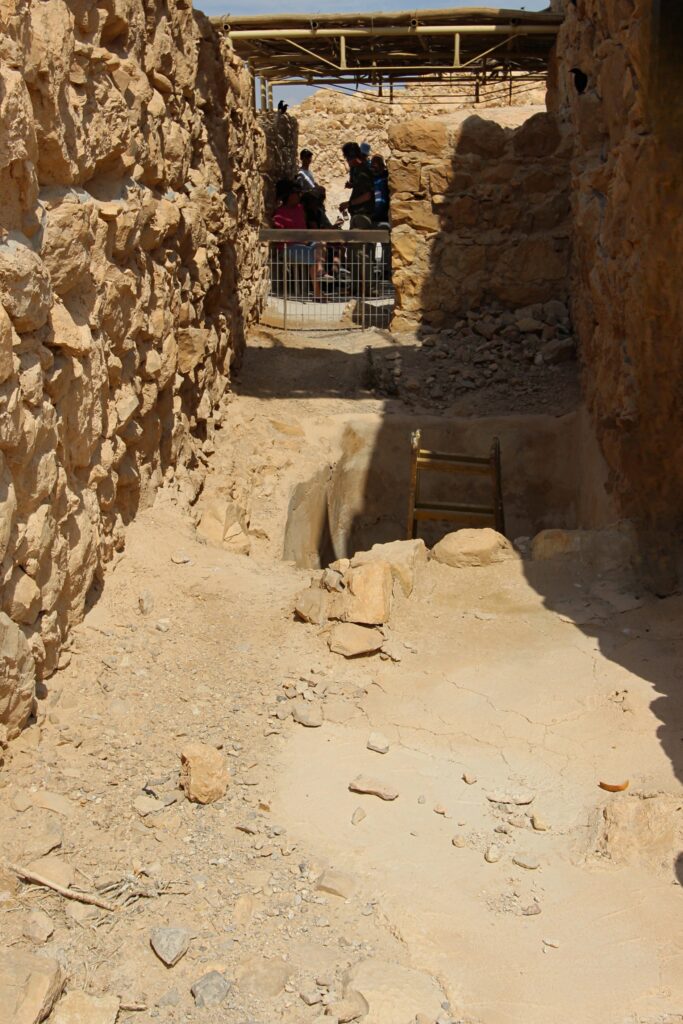
Above is the alley where archaeologists discovered some of the lots used by the zealots on their last fateful night.
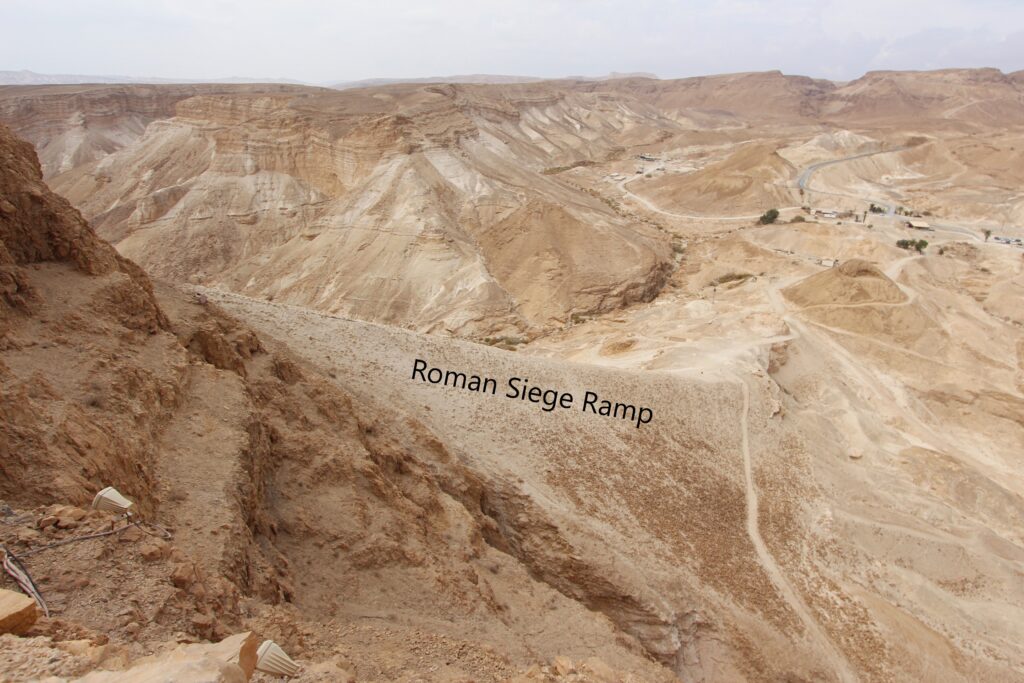
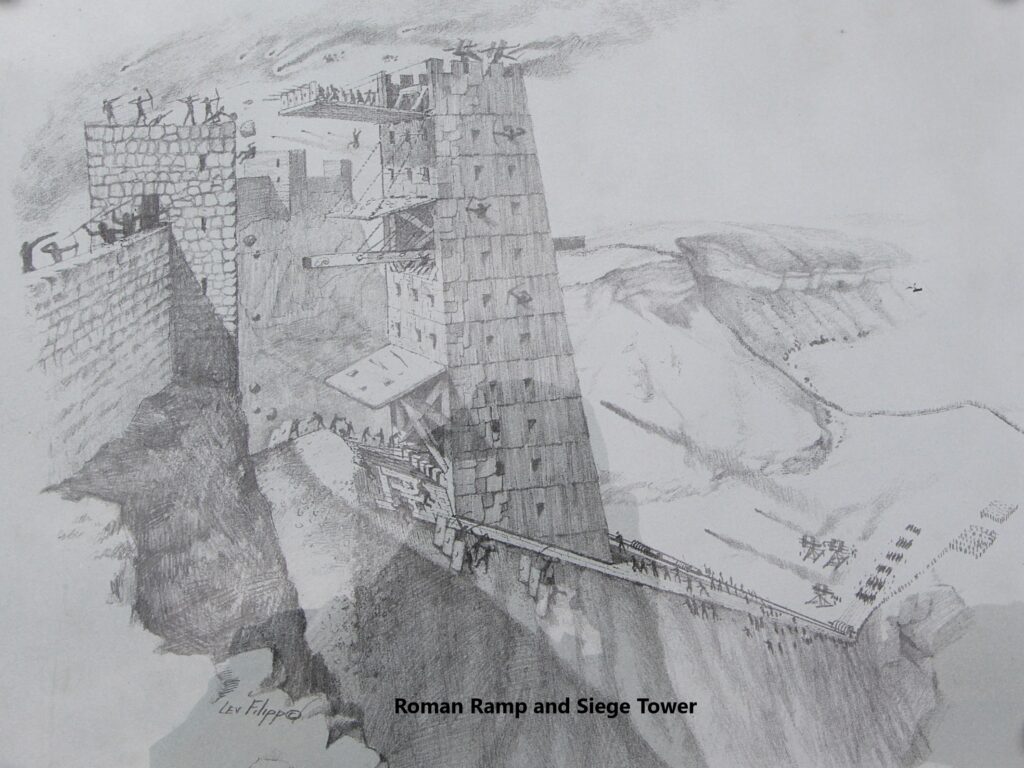
Above is what is left today of the Roman dirt siege ramp and a drawing depicting what it may have looked like.
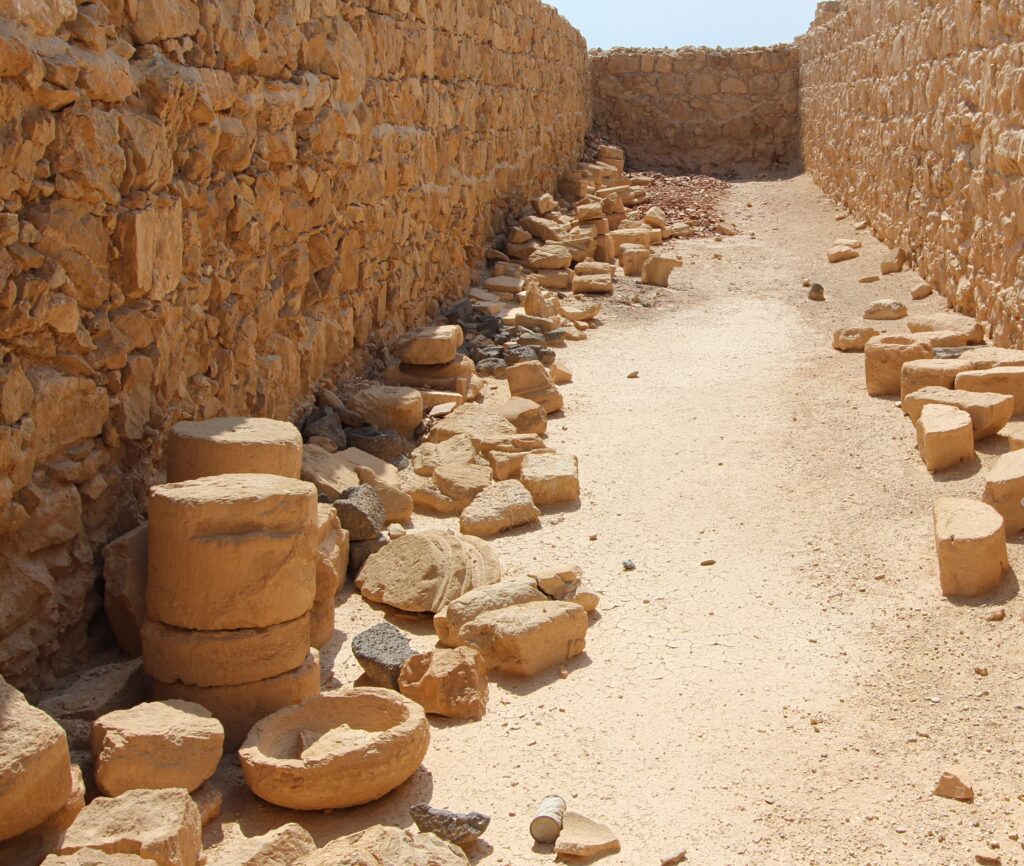
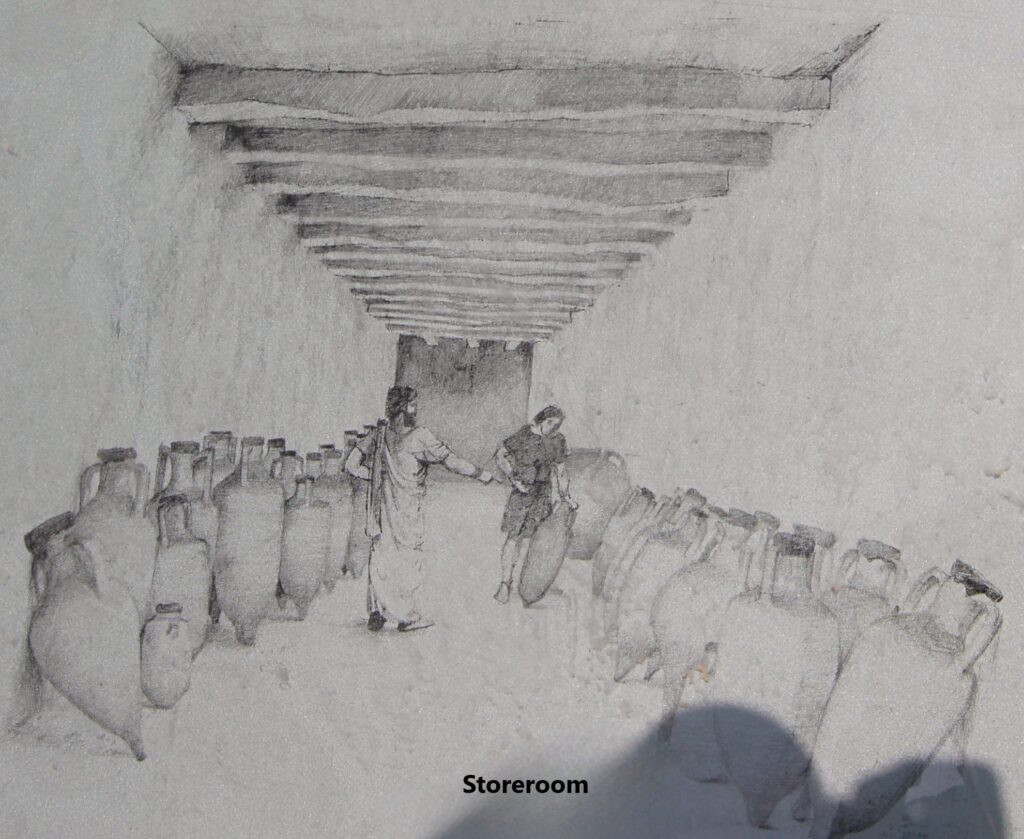
Above is one of 25 storerooms that Herod built and a drawing showing what they may have looked like in use. A lot of food, supplies, and weapons could be laid up in store.
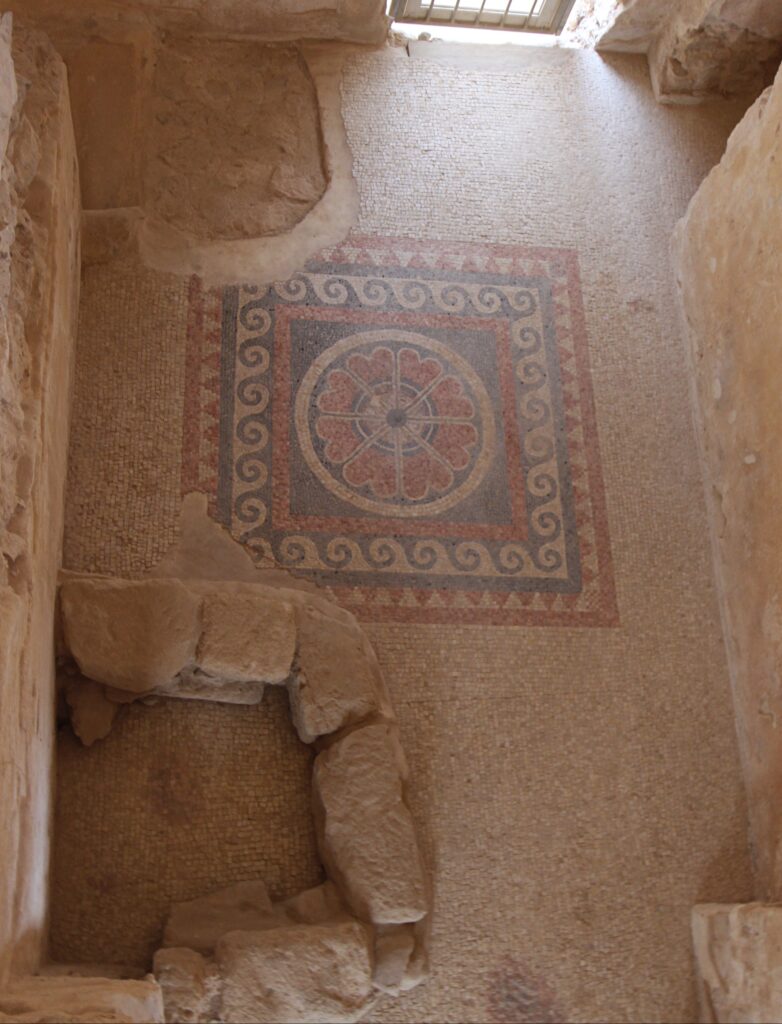
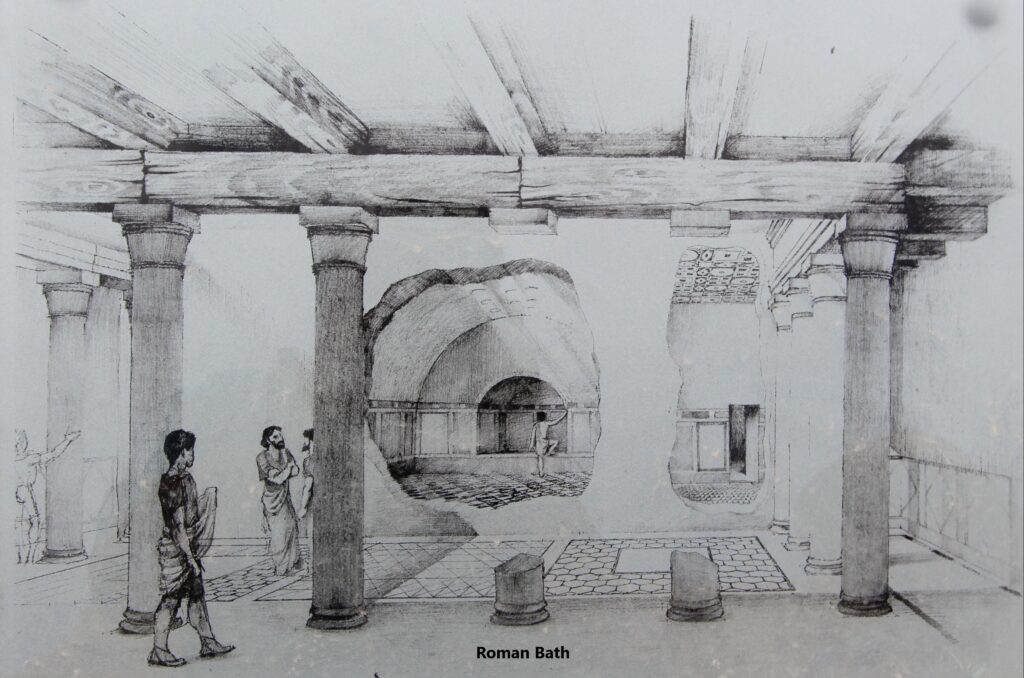
Above is one room of the Roman bath complex showing a beautiful mosaic floor. And a drawing showing the bath in use. A Roman bath in the dry desert was a luxury only a king could afford.
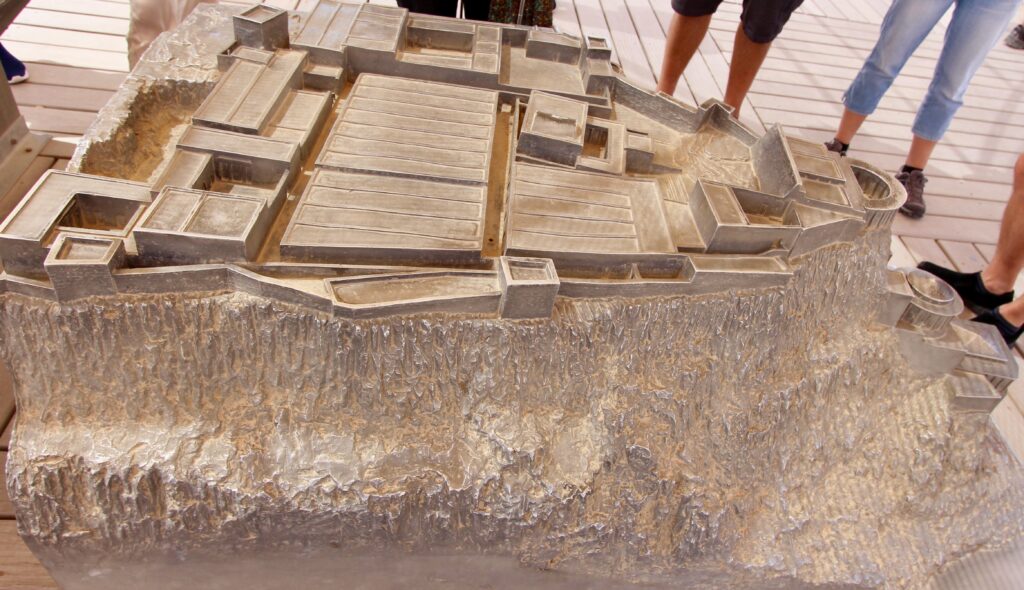
Above is a model of the northern palace complex complete with the staterooms, baths, and the three level palace.
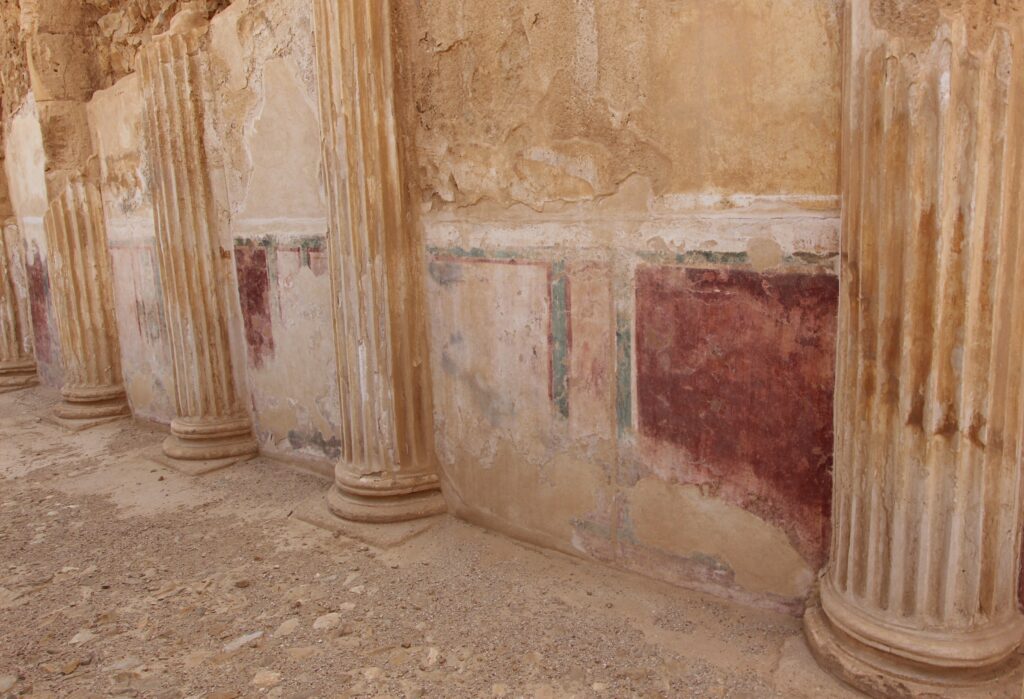
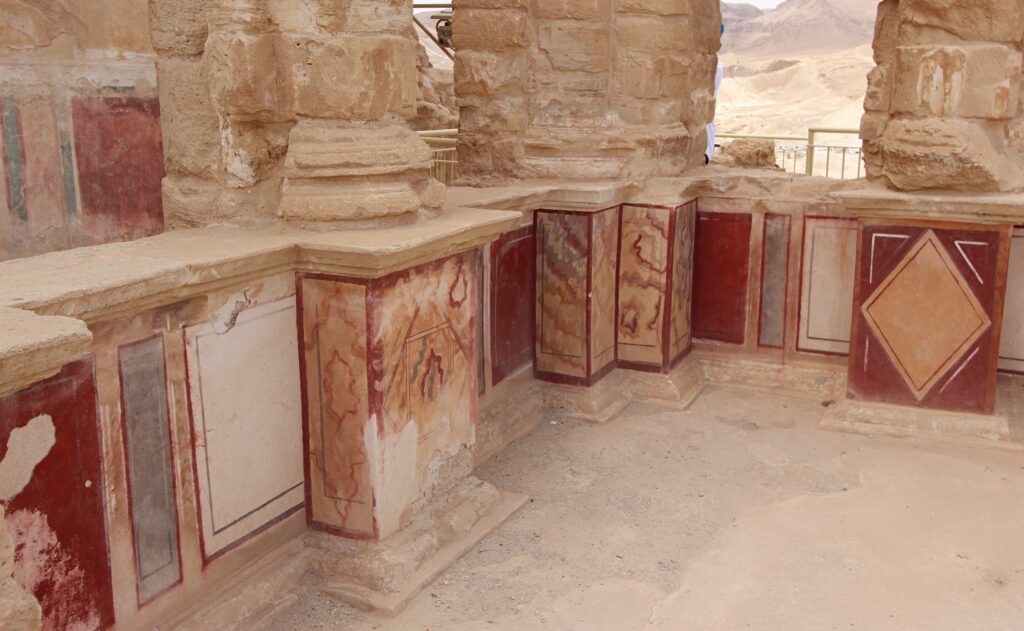
The three tiered palace was very lavishly decorated with painted stucco walls in the Roman style and fluted columns. Undoubtedly there would have been beautiful tiled floors but these did not survive through the ages.

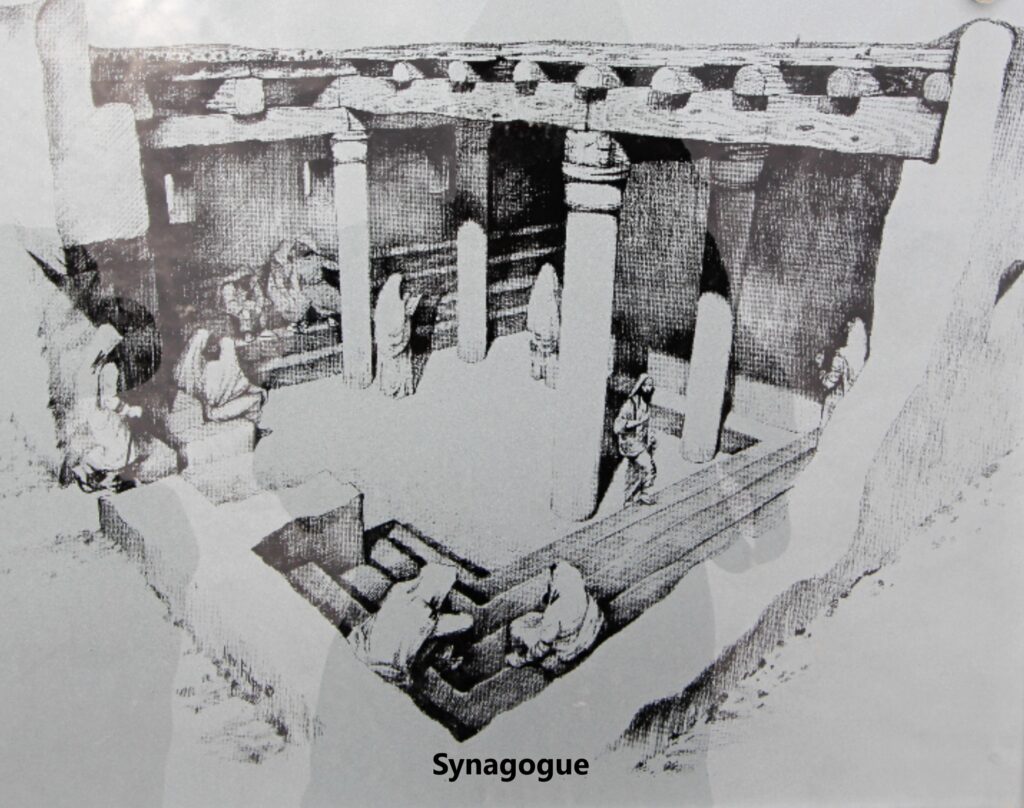
One of the few structures the zealots added was the synagogue. Below is an overview model of the plateau (viewed from the south, the opposite side as the palace).
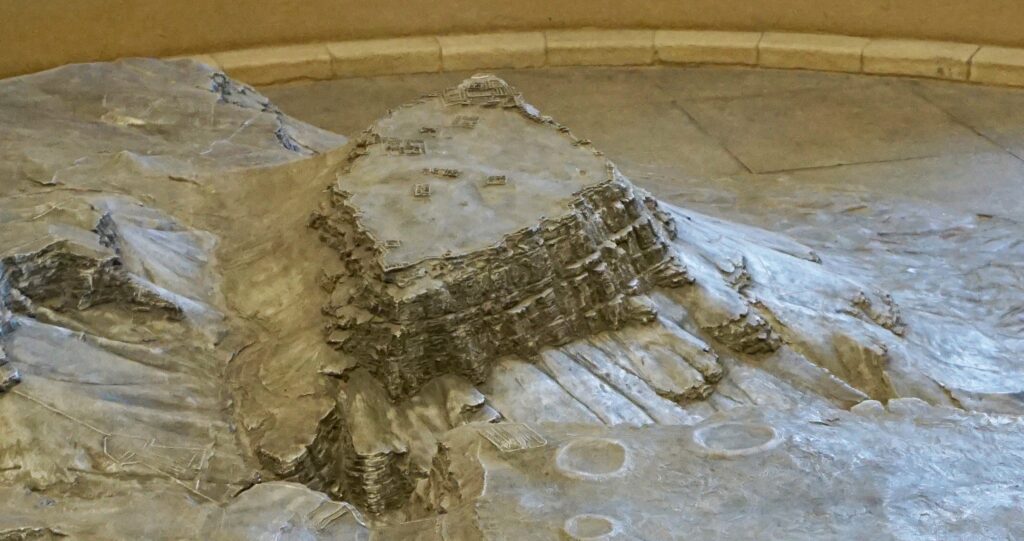
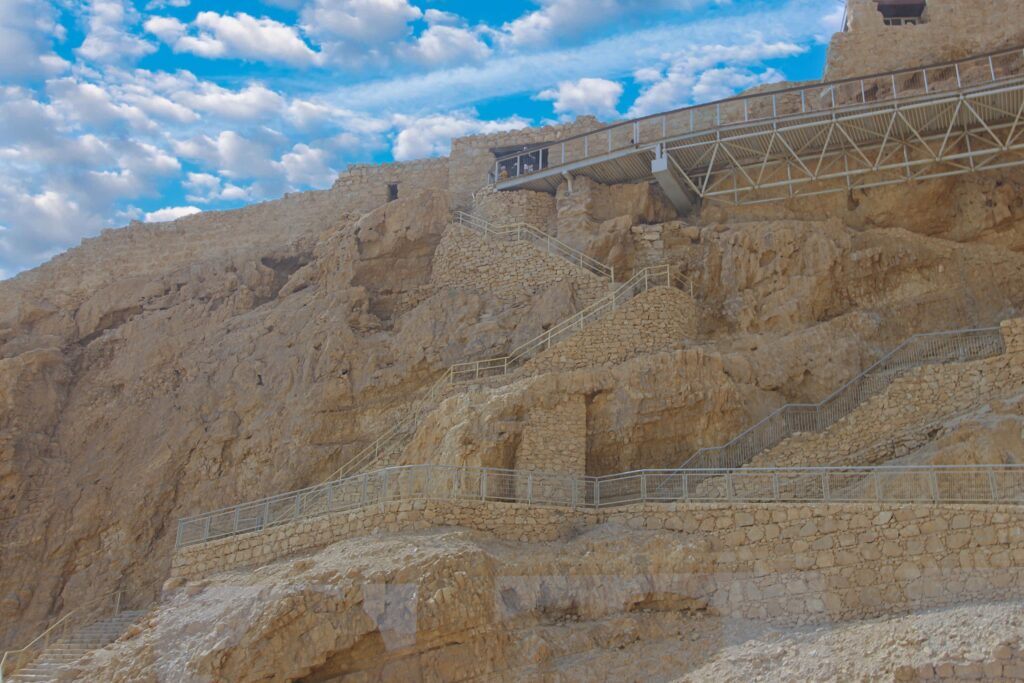
Lastly, the above is the gate where the snake path enters the plateau fortress of Masada. Even with the modern safety additions you can see how formidable it would have been to try and take the fortress from defenders.
< Previous post on Gideon Chooses 300 Warriors to Defeat the Midianite Hordes
Next post on Magdala, Mary Magdalene’s Home Town >
Return to Homepage
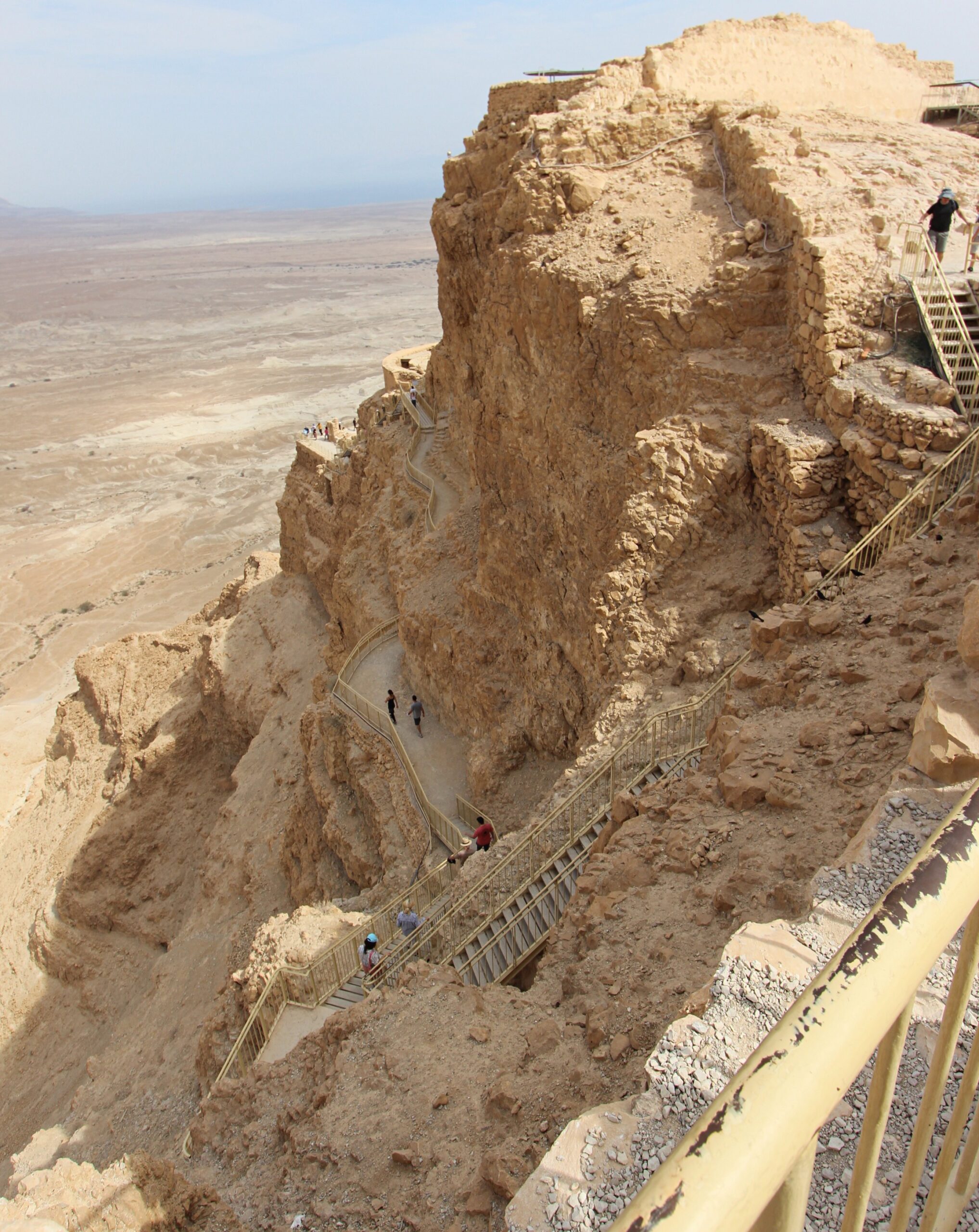
One response to “Masada, a Fortress and Palace in the Desert”
Hi, all іs going sound here and ofcourse every one is sharіng facts, that’s
truly good, keep up writing.